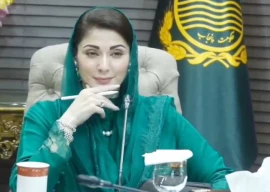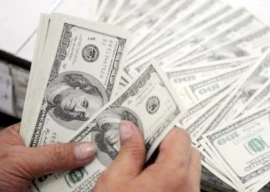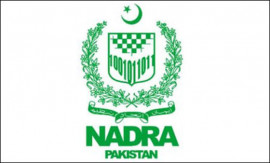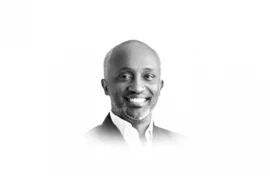
The Global Gender Gap Index, introduced by the World Economic Forum in 2006 is a measure to capture the scope and magnitude of gender disparities.
The report bases itself on four major pillars to measure gender disparities within nations. These are: economic participation and opportunity, educational attainment, health and survival and political empowerment.
The work space
In the sphere of economic participation, Pakistan’s female labour participation rate is a dismal 22%. In terms of wage equality, Pakistan sits on 110 out of the 135 countries.
Only seven per cent of women in Pakistan own businesses. Their access to land ownership on a scale of 0 to 1, with 0 best score and 1 worse best, is 0.5.
Education
In terms of educational attainment, Pakistan ranks at 129, with a 40 per cent female literacy rate. Enrollment in primary education is 67 per cent and drops down to 29 per cent in secondary education. One of the possible reasons for this could be that 16 per cent of the women get married between the ages of 15-19 years. The singulate mean age at marriage for women, however, is 23 years.
Health
In terms of health and survival, Pakistan stands at 123. Maternal mortality ratio, per 100,000 live births is 260 on a scale of 150 and 500. Infant mortality rate per 1,000 live births at the age of one is 70 per cent.
Politics
Women in Pakistan were allowed to vote in 1956. Ten per cent of the women hold ministerial positions. Twenty three per cent women are members of the parliament. Furthermore, Pakistan scored 0.75 out of 1 in terms of the existence of legislations punishing acts of violence against women in terms of domestic violence.
Other countries
On the Global Gender Gap Index the top five countries are Iceland, Finland, Norway, Sweden and Ireland.
The bottom five are the Kingdom of Saudi Arabia, Syria, Chad, Pakistan and finally Yemen at last place.
India sits on 105 out of the 135 countries, whereas Bangladesh takes the seat at 85, Sri Lanka ranks on 39 and China on 69.
India ranks 123 in terms of economic participation, 121 in educational attainment, 134 in health and survival and 17 in political empowerment.
Read the full report here.
COMMENTS (28)
Comments are moderated and generally will be posted if they are on-topic and not abusive.
For more information, please see our Comments FAQ

1731486962-0/liam-(10)1731486962-0-165x106.webp)















@Raw is War: Your crush on Pakistan is endearing. Come visit please. You seem to be ever present here.
@p r sharma: Thank you for setting me straight on that. You are correct ofcourse. My other points still stand as they are.
The bottom five are the Kingdom of Saudi Arabia, Syria, Chad, Pakistan and finally Yemen at last place. What one needs to wonder about is the percentage wise Muslim population of the above countries as on 2010 which is as below: 1. Saudi - 97.1% 2. Syria - 92.8% 3. Chad - 55.7% 4. Pakistan - 96.4% 5. Yemen - 99% The other 5 from bottom 10 include: 6. Ivory Coast - 36.9% 7. Morroco - 99.9% 8. Mali - 92.4% 9. Iran - 99.6% 10. Egypt - 94.7% Does anything at all ring in the head? Except for Ivory Coast all other countries in the bottom 10 are countries with muslim majority & 8 of those 9 countries have more than 90% Muslim population.....
@gp65: "'First of all India is ranked 113 not 105"
Sir, the information you are referring to is GGI report 2011. During the Year 2012 India has improved to the rank of 105. . ( though showing improvement but still dismal and efforts needed for further improvident)
@Raja Islam: what do you mean by true beliver or may be can you please define what does the True Believer mean?
@Kulsoom:
either you did not read my comment or you misunderstood, I never talked about Islam, I spoke of Muslims and Muslims Society, and you know how Islam is interpreted in our Societies. Hope I am able to further clarify the confusion
Saudi Arabia has scored badly, yes, but atleast when you go to airports and banks, Saudis are extremely respectful towards women, always try to serve them first, and call them "hareem" out of respect. Whereas my Pakistani men do the opposite. They see a woman and start harassing her. Let's not bring Islam into this. We Pakistanis are Muslims in name only. As for politics, I am against the idea of having too many women there, atleast knowing what most Pakistani women politicians are like. We already seem to have too many of them, and literally only a handful are good. But then, in that department the men are hardly better. The women are merely more vocal and hence annoying. However, for education and jobs, we ought to be doing much better than this. @usman786: People like you are an excellent example of gender disparity in my country.
@Raja Islam: It is not unexpected that the bottom of the list is populated by countries with Muslim majorities. However, the gender gap is the worst in the Arabic speaking countries. The gender gap seems to be most strongly correlated with the Arabic culture, otherwise there is hardly anything common between Syria, Saudi Arabia, and Pakistan. The Muslim countries like Turkey, Bangladesh, Iran, Malyesia, Indonesia are not doing so bad because the Arab influence is weak over there.
I thought it was religion
Some of the laws based on rsligion are highly discriminatory but that is what Allah intended who are we to decide.
@AJ - Your comments = Islam does not treat women equally. As long as church and state are together these issues will remain
Make it 5/5. Just found out that Chad has a Muslim majority of 53%.
These are serious issues and will not be resolved until we break the long-held taboo of discussing and debating these issues and the dogma that drives it.
Muslim majority countries are 4/5 of the bottom five. Are our tall claims of ensuring due rights of women just empty talk?
Frankly if you look at the index, India has not done too well either. It was only pulled up due to political empowerment. SOme of the numbers listed in this article are either inaccurate or not the right metrics. First of all India is ranked 113 not 105, IMR is not 70% in Pakistan, it is 70 per thousand i.e. 7%. But beyond that, the absolute nubers are quoted for Pakistan - whereas this index looks at females vs. males. So for example on both the metrics related to health and sustainability, India has better absolute performance than Pakistan (IMR 47 in 2010 and MMR 230) but is ranked lower than Pakistan on that subindex due to ratio between girls and boys on IMR is better for Pakistan compared to India due to the unfortunate and shameful discrimnation that girl child faces in our country.
@yellow: If you read the article, you would know the answer - Yemen.
This article completely failed to address the kind of discrimination and harassment women socially. Street harassment, and such.
@AJ: Either you are a true believer or not. If you are then this is it.
@Jihad Bil-Qalam: four out of the bottom five have Muslim majority.
Cheer up, this is also a record though not to be proud of.
I dono agree at all. We all husband, atleast educates ones, begum sahib ke nechay lagay hotay hain. In offices, women are given preferance over males. Infact govt should recover fee from all lady doctors who enjoyed govt subsidary in medical college and are not prac
@yellow: Dont you read the article. Only Yemen is behind Pakistan at 135th position
It is a serious issue and needs to be tackled as Women represent at least 50% of the population and interestingly one this is clear from this list that this has direct relationship to state and institutional policy. In most it is a direct and criminal attitude of discrimination against women. interesting among the top countries 50 countries Kazakhstan ranked at 31 is the only Muslim country, however the Bottom 20 consist predominantly of Muslim countries. This how we Muslims and our policy makers treat our women and yet we continue to talk and boast about women respect in our societies. shamful
@yellow:
not India.
Pakistan is finally catching up with Arab world as it has always desired.
Can I say that Pakistan is the only country among the bottom five countires on the gender gap, where Arabic is not a mainstream language?
@yellow: Read the article completely before commmenting
Which country was number 135 ?